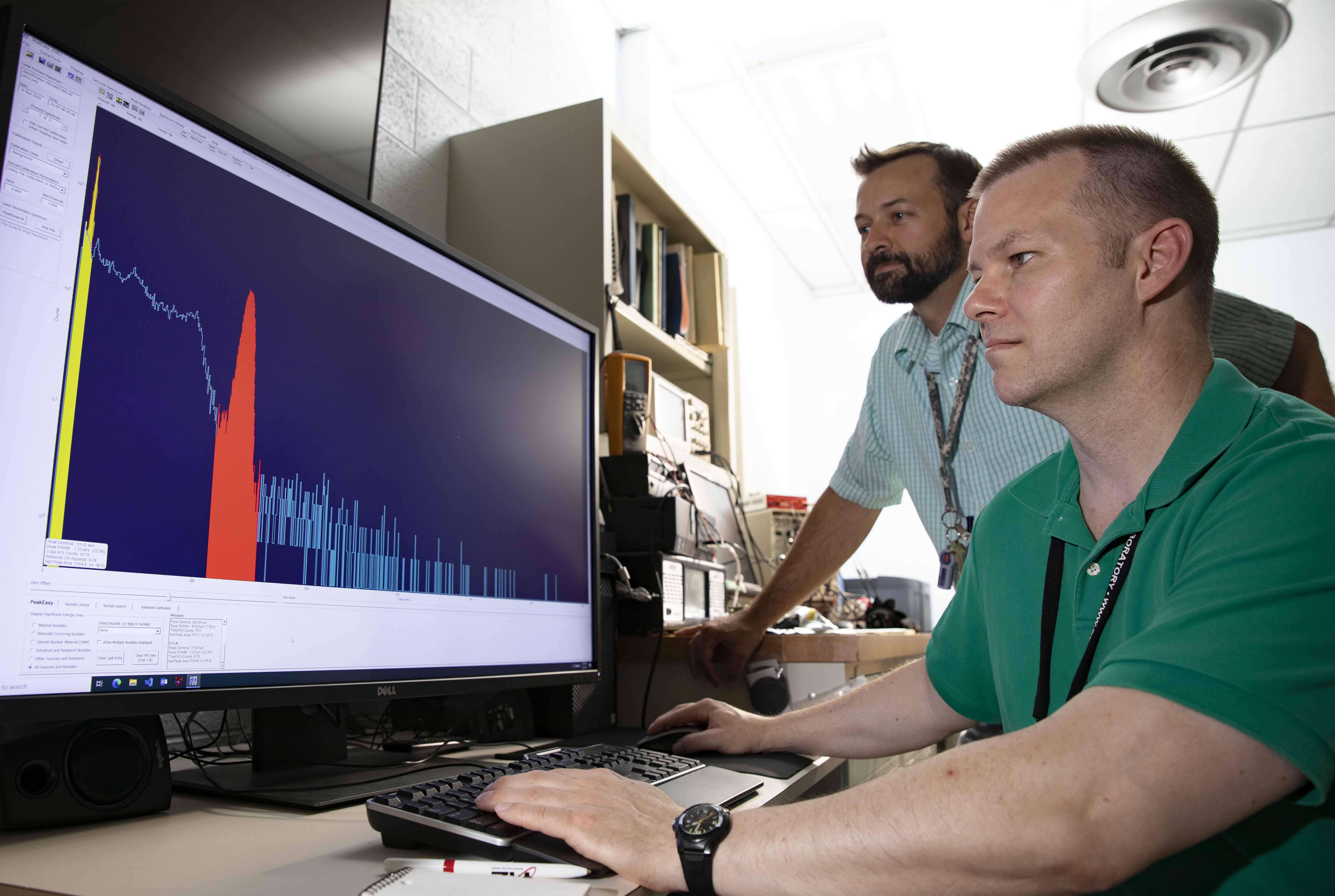
Brandon Grogan (right) from Oak Ridge National Laboratory is the most recent participant in the Mid-Career Professional Exchange project sponsored by National Nuclear Security Administration’s Office of Nonproliferation and Arms Control. The project seeks to provide production experience to researchers. Jeff Preston (left) of Y-12 Development served as Grogan’s mentor.
Oak Ridge National Laboratory (ORNL) and Y-12 National Security Complex (Y-12) both trace their history to the Manhattan Project, and both play important roles when it comes to international nuclear safeguards. International nuclear safeguards are a set of technical measures applied by the International Atomic Energy Agency on nuclear material and activities, through which the IAEA seeks to independently verify that nuclear facilities are not misused and nuclear material is not diverted from peaceful uses.
The Mid-Career Professional Exchange project, sponsored by the National Nuclear Security Administration’s (NNSA’s) Office of Nonproliferation and Arms Control, seeks to educate researchers through a production experience. This project provides ORNL staff members a fresh perspective by giving them working-facility experience and mentorship with a facility expert from Y-12. The ORNL employee leaves Y-12 with real-life applications for their current research and development ventures, and better prepared to serve the international safeguards community, while Y-12 is able to tap the employee’s expertise in areas such as computer modeling and nuclear detection.
Since 2018, Y-12 has hosted several exchanges. Brandon Grogan from ORNL's Material Security and Stewardship group is the most recent staff member to participate in this program.
According to Y-12’s principal investigator, Jason McCall, this exchange was very successful. “Brandon was able to complete an accelerated exchange, despite the challenges of COVID-19. He spent time in the Highly Enriched Uranium Materials Facility and our other production and fabrication facilities, and he was able to learn a lot of new skills that are directly applicable to international nuclear safeguards.”
Research vs. production
With a B.S. in Physics from West Point and an M.S. and Ph.D. in nuclear engineering from the University of Tennessee, Knoxville, Grogan has the academic bona fides. He’s been at ORNL since 2006, starting as a graduate research assistant. He is now a staff researcher, and his interests include nuclear forensics, international safeguards, non-destructive measurements, and inverse methods.
The career exchange allows Grogan to add some production experience to his impressive academic résumé before he goes to his next assignment as a technical advisor for the Nuclear Materials Information Program in Washington, D.C.
Jeff Preston of Y-12 Development served as Grogan’s mentor. “Brandon had visited a few other sites, but he had not worked in the production areas, so this exchange allowed him to see how a production facility operates. While he is going to an M&O (management and operating) position immediately afterwards, I believe the experience here will help shape how he approaches his role regarding production sites.”
Give a little, gain a little
As a “computer modeling guy,” Grogan brought some unique skills to Y-12. “I can model things that are too expensive or too dangerous to measure,” he said. The results of his computer simulations provided unique insights into Y-12 materials for various radiation detection applications.
While working in Development, he focused on a system for measuring oxygen content in various materials. The previous system was assembled in the 1990s, and replacement parts are no longer available. Grogan’s goal was to develop models for new system designs. With these models, Preston’s team will be able to select and purchase components for the new system, confident that it will achieve the same measurement fidelity as the old one.
The bottom line
“The career exchange is a good program that provides cohesiveness and team building between NNSA and Office of Science laboratories,” said Preston. “Office of Science personnel rarely obtain an in-depth view of an NNSA production facility given need-to-know and other limitations. The program enables a cross-pollination between labs and production sites that can better align strategic goals.”
As the Y-12 program lead, McCall wants these mid-career exchanges to be formative. “I hope Brandon’s experience at Y-12 contributes to his success throughout his safeguards career,” he said.
“It’s definitely been worthwhile,” said Grogan. “We (researchers) do all this theoretical stuff, and we sometimes forget what a production environment looks like.”
ORNL’s program lead, Jessica White-Horton, further touts the exchange: “When the participants return to ORNL, they are reinvigorated and communicate about how much they have learned! Some things simply cannot be taught in a classroom.”